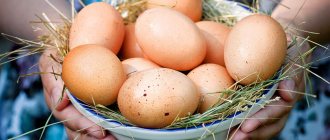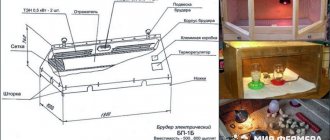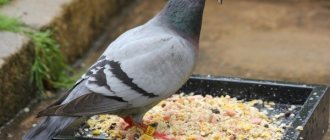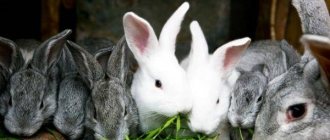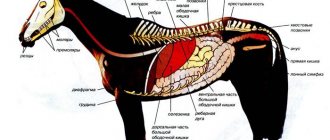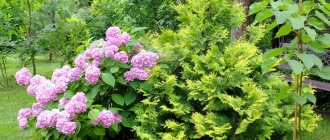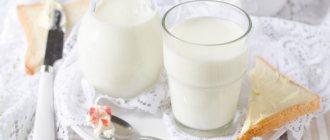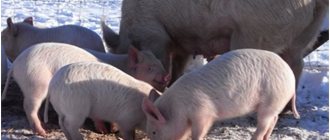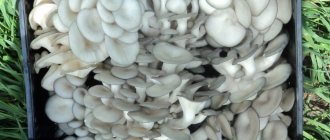Preparatory activities
The first stage of work includes the preparation of the required volume of high-quality feed. First of all, this is dry hay and straw, silage and root crops. All of the listed feeds are the basis of nutrition for sheep during the winter.
At the same time, it is necessary to prepare such activities as:
- arrangement of premises for a sheepfold with the presence of feeders for dry grass and mixed food;
- additional feeding of sheep;
- carrying out diagnostic examination of livestock;
- implementation of deworming activities;
- prevention of scabies.
The mechanization of heavy work also plays a major role, thanks to which it is possible to move livestock to a specially equipped room in a short time.
Sheep and Lamb Diet: A Complete Guide to Animal Nutrition
Sheep are one of the few farm animals that are unpretentious in terms of keeping and feeding conditions.
At home, they cannot please the owner with their productivity (meat, milk, wool), being kept on the same pasture. However, what else do adult sheep and lambs eat besides grass and hay, we will look at it in more detail in this article.
Sheep in nature feed on roughage plant feed, and therefore on farms, provided there is a sufficient amount of pasture areas, they can be kept exclusively on pasture.
However, it is not always possible to graze animals all day and provide them with the necessary amount of feed to obtain products.
Arrangement of the premises
The sheep shed needs to be insulated. It is necessary to ensure that it maintains a temperature range of 10 to 14 degrees Celsius. It is important to ventilate the sheepfold, and therefore the windows should be opened fully or partially. It is recommended to use straw as bedding.
Keeping your sheep shed clean is a guarantee of animal health. Manure should be promptly cleared from the sheepfold. Improper cleaning leads to musty air in the room. In addition, when the fleece is contaminated, the likelihood of developing diseases increases.
Large farms use mechanized harvesting. To infuse manure, farmers make a homemade storage facility. At warm temperatures, manure is stored in it for at least 5 months. After this time, the infused manure is used as fertilizer.
Next to the barn they make a pen where sheep are walked. During a walk, animals' appetite improves, so they consume food in large quantities. For this purpose, special feeders are made in the pen. To keep the food from freezing, the sheep receive it only inside the sheepfold.
Types of feed used
The diet for sheep on a farm should be compiled in such a way that the animals receive the entire set of nutrients, vitamins, microelements, etc., necessary for their body. The feed used in keeping sheep is classified into three large groups:
- juicy;
- concentrated;
- rude.
Also, such small cattle on farms often receive compound feed. Mixtures of this variety, in addition to concentrated ones, may contain roughage, as well as various types of mineral and vitamin supplements. In most cases, this type of sheep food contains a lot of protein and nutrients.
Sheep diet in winter
Feeding in the cold season is carried out at least 3 times throughout the day. In the morning, sheep are fed with roughage, at lunchtime - with succulent feed, and in the evening, the animals are given concentrates.
During the winter, one sheep requires a certain supply of food, namely:
- roughage - 500 kg (hay - from 200-250 kg and silage - from 350-500 kg);
- concentrates - 20-25 kg;
- root vegetables - 100 kg.
The most important food is hay and silage. Sometimes crushed and steamed straw is added to sheep. The livestock is given warm water after each meal at the rate of 7 liters per day for each ram or ewe.
Important! In addition to the main feed, sheep must be provided with a complex of vitamins and minerals in winter. Such supplements make up for the deficiency of herbal food that animals receive as their main diet in the summer.
Among the popular additives used in sheep farming, feed chalk, bone meal, salt filucene, feed sulfur, iodized salt and yeast are in great demand. If sheep receive adequate nutrition, balanced with all vitamins, there is no need to take supplements.
Antibiotics and probiotics
In the United States, the antibiotic oxytetracycline is used in animal feed to prevent abortions caused by chlamydia and vibrio. To do this, producers must obtain written permission from their veterinarian. It is currently prohibited to include antibiotics in lamb feed.
Probiotics are the opposite of antibiotics . These are beneficial bacteria. Probiotics improve animal health and digestion. Many commercial foods contain probiotics.
Yeast is a probiotic and is included in livestock diets. To date, there has been no published data that shows improvements in animal behavior as a result of feeding probiotics or similar supplements.
Ammonium chloride is often added to the diet of lambs to prevent urinary stones (kidney stones).
Special care for lambs
By the end of the stall period, sheep bear offspring. Before giving birth, the owner must especially carefully monitor the condition of the animal. 7 days before the birth of small lambs, mating queens should be sent to another room. The temperature in it should vary in the range of 15-17 degrees. Sheep must be carefully fattened, thereby ensuring preparation before giving birth.
Lambs born in the winter season require trivitamin vaccination. A week after birth, they should be taken out for a walk. The main food for young animals in the first two weeks of life is sheep's milk. Later, the owner adds new high-quality products to the lambs’ menu, and does this gradually. For small lambs, it is necessary to make small feeding troughs and place chopped legume hay in them.
Suckling queens need to be fed with succulent feed, such as silage and root vegetables. Fodder beets will be an excellent food for them at this time. A sheep can eat up to 5 kg of such food per day. Before feeding, beets are sprinkled with finely chopped oats or salt containing iodine. Lack of food causes a decrease in milk volume and leads to illness in the animal.
What do sheep eat
Feed for sheep is chosen taking into account not only the season of the year, but also the gender, age, and purpose of the animals. The quality of livestock feeding is determined by the climatic region; pasture sheep farming is most profitable in tropical and subtropical areas; it requires minimal feed costs.
The diet should be balanced. When sheep eat grass, hay, vegetables, grains, vitamin and mineral supplements, they receive a sufficient amount of nutrients required for the full development of the body and increase body weight. Supplements are especially important in the winter months, when animals do not eat enough succulent plant food.
Succulent plant food
In the warm months, sheep eat grass on pasture; the share of fresh greens reaches 85% of the total feed. The best plant food for livestock is meadow grasses (clover, dandelion, sweet clover, granary, plantain). If a sheep eats grass with thorns on a pasture, then there is no need to worry: weed thorns are no less useful for the sheep’s body. The main thing that a farmer must do is to check if there is any poisonous vegetation in the meadow. Toxic to sheep:
- lily of the valley;
- henbane;
- hemlock;
- dope;
- puppeteer;
- celandine.
Animals should not be allowed to eat wet, dewy grass. It provokes swelling of the rumen and flatulence; in the absence of surgical treatment, the sheep dies. It is useful to drive livestock onto pastures with woody vegetation. Sheep willingly eat thin branches and shoots, rich in vitamins and minerals, which has a positive effect on body weight growth and coat quality. In the absence of pastures with woody vegetation, branches can be prepared elsewhere, tied into brooms, and dried.
Branches useful for animals:
- willow;
- apple;
- aspen;
- hazel;
- birch;
- cherry;
- ash.
One of the cheapest and most popular types of succulent feed is silage. It is made by fermenting the vegetative parts of herbaceous plants:
- forage grasses;
- waste garden greens, carrot and beet tops;
- lettuce and cabbage leaves;
- meadow grasses, legume green manures.
An adult animal eats up to 4 kg of silage per day. When fermented, acids are released; sheep may not like the sour taste of the treat. To avoid this, either pre-wither the plants or add ground straw to the mass. Periodically, the sheep are treated to small quantities of wheat, barley, and corn grains.
Roughage
The main roughage is hay. It is harvested in the summer, calculating 3 kg per adult. The best option is meadow herbs. Straw is less important, contains few useful substances, animals eat it to quickly satisfy hunger and normalize digestion.
See also
DIY electric shepherd assembly diagram for sheep and how to useRead
E
Expert opinion
Zarechny Maxim Valerievich
Agronomist with 12 years of experience. Our best country expert.
Ask a Question
It is not necessarily included in the sheep diet in winter; up to 2.5 kg is harvested per individual. They use wheat, barley, millet, and alfalfa. It is advisable to harvest spring crops, as their material composition is richer.
Straw should not be given to young animals and breeding rams. For sheep, it is preferable to steam roughage by adding concentrates, grain, and root vegetables. A good source of vitamins for livestock is haylage - grass dried to 50% moisture, harvested at the initial stage of the growing season, stored in the absence of oxygen. It is practiced to feed sheep with oats and the remaining bran from its processing. Animals willingly eat meal and cake obtained from soybeans, corn, and sunflowers.
Roots
Rich sources of vitamins, minerals, and fiber are fruits and root vegetables. Sheep eat potatoes, carrots, fodder beets from root vegetables, and apples from fruits. Beets and carrots are given raw. You cannot feed raw potatoes to animals, otherwise the intestines will swell.
The daily portion for an adult is 500 g, for young animals – 300 g. Root vegetables are especially useful for nursing females.
Melon feed
Among vegetables, sheep eat pumpkin and zucchini. Melons are rich in vitamins, but they are given mainly as a rare delicacy, since growing vegetables specifically for cattle breeding is not economically feasible. Vegetable treats accelerate the growth of animal body weight and increase the milk yield of giving birth in females. The daily portion for an adult is up to 400 g.
Concentrated feed
Compound feed is given to animals intended for slaughter to accelerate body weight gain. An adult eats 500 g of concentrated feed per day, a young one – 400 g. For a dairy sheep, 200 g is enough, and a meat sheep eats up to 700 g.
Mineral supplements
The lack of minerals negatively affects the health of animals, so mineral springs are included in the diet of sheep.
Mineral deficiency in sheep manifests itself:
- eating and licking inedible things;
- development of rickets in young animals;
- convulsive muscle contractions;
- loss of appetite;
- lethargy, exhausted appearance;
- dermatological problems;
- stool disorder.
To compensate for mineral deficiency, sheep eat bone meal, chalk, and salt. Pet stores sell salt rocks for licking. You can use feed vitamin and mineral supplements, for example, Vitasol.
One adult requires 10-15 g of chalk or bone meal per day, a young one - 5-10 g, a lamb - 3 g.
Animal supplements and drinking regime
Pregnant females and occasional animals are given animal feed to maintain the body:
- egg;
- milk;
- whey;
- cottage cheese.
Sheep need to drink enough fluids, which is as important to maintaining livestock productivity as quality feed. An adult animal drinks up to 10 liters of water per day.
Required volume of hay for sheep for the winter
Experienced sheep farmers know that fine-wool sheep can survive the entire winter months only on spring straw. Moreover, if you add about 400 grams of hay per day, the animals will definitely gain weight. This means that roughage is considered the most suitable for feeding wool sheep, and should be considered as the main one during the winter.
It has been proven that it is hay that ensures the wool productivity of sheep. Moreover, it cannot be replaced with other food. Sheep consuming hay and any concentrated feed produce large volumes of soft wool.
If we talk about the volume of roughage needed to maintain the suitable productivity of the female, the owner should feed the sheep with hay in the amount of 1/30 of its weight during the day.
The volume of hay will be determined based on its composition and beneficial properties, as well as the type of sheep. Rams and lambs should be fattened better than ewes or meat sheep.
The starting amount of dry herb consumption by Romanov sheep has been established (per day):
- pregnant queens - 0.5-0.7 kg, lactating queens - 0.8-1.0 kg;
- rams - 1.0-1.3 kg;
- lambs - 0.4-0.5 kg.
If the volume of hay harvested for the winter period is not enough, its deficiency can easily be compensated for by straw. As a supplement to the main diet, straw should be given to animals in the amount of 0.5-1.5 kg per animal per day. To ensure the best quality of straw, it should be brewed and yeasted.
Summer and autumn feeding
During the warm period, you need to fill the feeders with fresh grass during the night rest. During the day, sheep should eat pasture in the pasture. Additionally used:
- concentrated feed - no more than 100 g per day;
- hay – no more than a kilogram per day;
- mineral salts.
In autumn, the amount of dried grass per day increases to 3 kg, and during the day the animals continue to graze on the pasture. Additionally, you need to give about 4 kg of vegetables and fruits per day. Also, do not forget about mineral supplements.
What determines wool weight gain?
The studies have made it clear that excess feed consumed increases the weight of the sheep and the volume of sweat secretions in the wool, but has virtually no effect on the increase in the weight of sheep wool.
The experiment was carried out with the participation of two females. One sheep was given grain and hay to eat, and the other was given only hay. The increase in live weight was 17 kg in the first sheep and 9 kg in the second. The increase in pure wool in sheep was similar - 880 and 1000 g.
Hair growth will not decrease even when the female reduces her natural weight. With insufficient nutrition, as a result of which sheep lose weight, not only the amount of sweat produced is reduced, but also the amount of sheep wool. From previous tests, it became clear that the volume of fleece with improper nutrition and significant weight loss becomes 20% less.
If the sale of castrated rams is the main source of income for a sheep farmer, then it should be taken into account that the animal’s weight loss in winter cannot be compensated for in the meadows. This means that the sheep farmer will suffer a heavy loss.
Any experienced sheep breeder should know that larger sheep eat less food relative to their live weight. At the same time, they can eat any food and grow more actively than small sheep breeds.
Application of concentrates
Sheep often need to be fed concentrates to provide nutrients that are not sufficient in the feed. There are also times and situations where concentrates are a more economical source of nutrition than traditional feeds. Supplemental nutrition for lambs has been shown to increase weight gain.
There are two types of concentrates: carbon and protein. Carbon dioxide con feeds have a high level of digestible substances, but also a tendency to reduce protein content. The most common sources of energy are cereal grains:
- corn;
- barley;
- wheat;
- oats;
- rye.
There is usually no need to process the grain (grind) for ewes except for lambs less than six weeks old. Whole grain diets do not cause digestive problems such as acidosis.
While cereal grains are the most concentrated source of energy, they are high in phosphorus and low in calcium. Diets high in phosphorus and low in calcium can lead to milk fever in pregnant or lactating sheep.
Excessive grain consumption can cause numerous digestive and metabolic problems in sheep and lambs, including enterotexenia (overeating), acidosis, bloat and polioencephalomalacia. Sheep always need time to adjust to a more highly concentrated diet , as there are different bacteria to digest starches and sugars compared to cellulose (fiber).
You need to know how much protein you need to use in your diet. Protein feeds contain high levels of protein (more than 15%). These include:
- soy flour;
- cotton fiber flour;
- fish flour.
Soy flour is the most commonly used protein supplement. By law, meat and bone meal obtained from ruminants cannot be fed to other ruminant animals, including sheep, so fishmeal is highly prized for its high level of by-product protein.
Arrangement of feeders
To ensure comfortable living conditions for the flock during the winter season, it is necessary to build a double-sided nursery in the walking area 2-3 months before the onset of cold weather. One compartment will be for concentrates and the other for dry hay. Divided feeders include the main components, namely:
- nursery;
- pan;
- gutter
The manger is used to place dry herbs in them. The manger has legs, between which there is a wooden bottom, a groove and lattice structures. The gratings are made at an angle inward so that there is a gap of about 10 cm between them.
A rack and a chute are necessary for concentrated types of food. Externally, the pan looks like an oval-shaped container located on legs. In order for the cubs to easily get food from the pan, its height should be no more than 120 mm. The gutter looks like a regular trough located on the floor. Its depth should be no more than 12 cm, and its length should be approximately 3 m.
Don't forget about installing water containers. All devices used for eating and drinking should be convenient, as they may need to be moved to another location. During severe cold weather, it is forbidden to keep sheep outside or give them food and water. Sheep farmers must use warm water for watering. Feeders must be filled to ensure that each animal is well fed.
What should feeders be like?
Sheep feeders should be easy to use and easy to clean. They are usually made into a crib type for hay, straw and grass, and also as a trough for wet mash and concentrates. The nursery feeder can be either one-sided or two-sided. 25 centimeters are allocated for each individual. For young animals – 15-20 centimeters.
The distance between the lattice poles is approximately 10 centimeters. This prevents the scattering of feed, and allows the sheep to freely get food. Do not forget that the ram feeds separately, so it needs its own feeder. Otherwise, he may drive females away from food. For more information about feeding and breeding animals, see the photos and videos.
Quality hay
The most important feed for sheep during cold periods is mixed-grass hay. It must be of good quality.
Initially, hay needs to be collected from the meadow in a timely manner. The mowing of cereal grasses occurs during the period of the plant emerging into the tube and its heading. Leguminous plants should be mowed at the onset of the bud formation phase and at the beginning of color development.
Excellent quality hay can be obtained by following the harvesting process. In the process, sheep farmers use windrow tedding and drying. To ensure that the stems and leaves dry at the same time, the stem is flattened. The moisture content of quality hay should be 17-19%. In order for hay to be well preserved, it is customary to harvest it in bales or rolls. When preparing hay, you must ensure that it does not get wet and remains green. Hay contains the required amount of carotene and vitamin D.
It should be noted that hay is considered the main source of sugar in the diet of sheep breeds in winter. If the hay was prepared in a timely manner and in compliance with the necessary rules, its composition will include up to 12-15% sugars. Large peasant farms engaged in sheep breeding, in addition to hay, harvest other types of grass.
Feeding young animals and lambs
Feeding lambs and young animals can be divided into three periods: 12 weeks of life - mother's milk or milk substitutes; 3-4 weeks – gradual taming to feeding; Week 5 – accustoming to the basic diet; 2 months – transfer of young animals to a special diet, taking into account productivity and purpose of use (for wool, for meat, for breeding, etc.).
In the first period of life - suckling - lambs feed exclusively on mother's milk at the rate of 5 kg of milk per 1 kg of weight. Already from the 10th day of life, you can accustom them to hay, to branches by hanging brooms, to vegetables - carrots and beets in feeders.
From about the 20th day, it is good to slowly introduce concentrates at the rate of up to 75 grams for a month-old lamb. The dose of concentrates up to 4 months is increased to 350 grams.
Feed for sheep and rams
The question of how much feed to feed sheep is important. Some sheep farmers are trying to reduce the cost of purchasing feed for the time when the animal is in the stall. They think that the animals will make up for the volume of useful products lost during the winter in the meadow. However, it is worth noting that simultaneously with the weight loss, there is a low quality of the fleece.
Otherwise, the livestock may die due to insufficient feeding. Many diseases develop without symptoms when the herd is well fed, but are a scourge for breeds with weakened immune systems. This is especially dangerous for animals infected with any types of parasitic diseases.
Pedigree feeding characteristics
Sheep selection went in several directions: obtaining meat, lard, wool, and fluff. Differences in productivity are closely related to the efficiency of fattening, so the success of using diets of the same species on animals of different economic purposes is very doubtful.
Fattening Romanov sheep
Romanov sheep have become widespread in the country and the world due to their high fertility - the uterus gives birth to at least 2 lambs, and in many lambings there are 4-6 newborns. The early maturity of young animals can be increased using intensive rearing technologies:
- early weaning (45-60 days);
- introduction of milk substitute, grass flour, granulated concentrates into the diet;
- reducing the share of green feed;
- replacement of feeding with intensive feeding;
- keeping in walking areas.
The technology used makes it possible to reduce the cost of feed units from 7 to 5 per 1 kg. Slaughter weight of 35-40 kg is achieved by 6 months. Further intensive feeding is not advisable, since growth is reduced, and instead of increasing muscle mass, increased deposition of adipose tissue occurs.
The technology makes it possible to obtain offspring from one sheep twice a year. The disadvantage of this method is the increased load on the breeding stock, so it is necessary to carry out constant culling and rearing of replacements. They are also bred from lambs along with rams to restore queens, but traditional rearing systems are used.
Fat tail breeds
They are most common in the southern regions (Caucasus, Kazakhstan, Uzbekistan), where Gissar, Saradzhin and Tajik sheep are the main herd. The popularity of the breed is associated with an anatomical feature (the presence of a fat tail - large deposits of adipose tissue on the lower back and sacrum) and ease of fattening (such rams are less demanding in feeding).
Fat-tailed sheep are ideal for areas with poor quality food supply - lack of cultivated pastures, poor soil quality, because such sheep willingly eat even the least nutritious plants. But their adaptability to harsh conditions makes them unsuitable for industrial sheep farming. As a result of intensive feeding, the rams begin to deposit fat tail fat instead of gaining muscle mass.
Juicy feed
Among root vegetables, sheep love to eat carrots or sugar beets. In the best case, animals should receive such food every day in winter. The required amount of sugar root vegetables for a mature sheep or ram is up to 4-5 kg per day. By receiving carrots as food, the animal’s body is saturated with vitamins. This food will be useful for pregnant and lactating queens.
In addition to the specified nutrition, sheep love potatoes, raw and boiled. Normally, the animal should receive this vegetable in a volume of 1-2 kg, based on the live weight of the sheep.
In addition to the previously mentioned vegetables, sheep can be given pumpkin, rutabaga, turnips and more as food. In 24 hours, the animal can receive no more than 3-4 kg of this food.
Basic diet
Representatives of this species are herbivores, so the basis of their diet is food of plant origin. Various plants, weeds, and often even thorns are eaten. However, grazing in wetlands can harm animals. At the same time, it is not recommended not only to drive them out to swampy pastures, but also to stockpile them there for the winter. A good option for grazing is mountain and even arid pastures.
Thus, dried and fresh grass is the basis of the diet of any individual. Animals are very fond of:
- legume and short grass hay;
- straw of various types, including barley, oat and millet.
Straw is very well absorbed in the body. As a top dressing, you can use root vegetables that are placed in sheep feeders (it’s quite easy to build these structures with your own hands). It is advisable to put potato tubers, carrots, zucchini, beets, pumpkin, etc. It is worth taking a closer look at each component of the animal’s diet to find out what to feed sheep at home.
Grain and feed
Compound feed is considered the best concentrate for sheep. However, not every sheep farmer can afford to feed the herd with such feed due to its high price. The way out of this situation is to replace feed with grain or flour.
The most suitable grain feeds are considered to be crops such as barley or oats. The norm for mature sheep is 0.3-0.5 kg. It is allowed to increase the rate in the case of feeding pregnant ewes and breeding rams.
Important! Oats are considered the most suitable feed for young lambs and rams. Cubs need to be given 300-400 g of oats per day, and rams - up to 1 kg. If the specified nutritional standards are observed, the immunity of animals is maintained.
You can buy feed, compound feed and feed additives from us:
Sheep feed
Feed and feed
Feed additives
Approximate rations for feeding sheep of various breeds
Hygiene in the sheepfold in winter
The inside of the pen where the sheep spend time during the winter needs to be kept clean. To achieve this, sheep farmers collect manure every day. If this is not done, the air will be polluted with hydrogen sulfide fumes that are harmful to the animal’s body.
It is necessary to promptly change the material serving as bedding. This is done because the old bedding quickly becomes damp and absorbs urine. In large farms, harvesting is carried out using an automated method. Urea, which accumulates in the existing bedding, reduces the quality of the fleece.
The area where sheep roam also needs to be thoroughly and systematically cleaned. For these purposes, bulldozers or other large equipment are used. An open structure for manure must be located on a site at least 60 m from the site fence.
In general, a sheep pen should be comfortable. The owner must monitor the availability of water in the sippy cups and provide food in a timely manner. In winter, the animal requires special attention. If the sheep pen has unsuitable living conditions, and the sheep receive insufficient food, then the risk of morbidity and subsequent mortality of the animals increases.
Sheep feeding
Fattening livestock for meat is carried out in two ways - they feed the mass on pastures, or receive feed in a stall. The feeding period occurs in mid-August and lasts until the first days of October. If pastures do not meet the needs of animals, they are fed with grains.
Stall feeding is used for 6-8 month old young animals and adult sheep. It is used in the autumn until the beginning of winter.
It is not recommended to fatten sheep whose teeth are changing; during this period they eat food very poorly. Before fattening, experts recommend shearing sheep, which has a positive effect on their appetite. For fattening in the stall, hay, cereals, cake, and root crops are used.
Winter care recommendations
If a farmer does not follow the required regime when caring for sheep in the winter, they are in a stressful state. They already find monotony difficult, as well as changing their nutritional diet. For this reason, the farmer must organize a proper daily routine for the animals. Otherwise, pets may lose their appetite and later become completely ill.
This advice is especially important to heed for farmers who keep flocks of ewes and pregnant sheep. The stress caused can negatively affect their well-being and lead to miscarriage or decreased milk production.
Experienced sheep farmers share useful tips with farmers who have just started raising livestock:
- it is necessary to systematically invite a veterinarian to inspect the livestock to prevent dangerous diseases;
- individuals with weakened immune systems must be urgently separated from the general herd and treated in a timely manner;
- once every six weeks it is necessary to clean the animals’ hooves;
- vaccinate sheep in a timely manner, following a certain schedule;
- ensure that food is stored in the right place with normal ventilation, to prevent the appearance of harmful rodents in these places;
- feed should be poured in such a way that the sheep cannot approach the feeder;
- Animals should approach the watering hole in small numbers, so that there is at least 25 cm of trough length per sheep;
- It is recommended to have heated drinking bowls on the farm; if they are not available, the animals are given water from a well.
The farmer has the right to transfer animals to stabling only after suitable preparation. First of all, he must take care of the preparation of necessary and high-quality feed, as well as their preservation throughout the winter. In addition, sheep must be kept in a specially equipped room with insulation and ventilation conditions.
To move into a stall, animals must undergo veterinary preventive measures. Proper care and feeding of sheep during the winter period ensures that the animal receives a sufficient amount of meat and wool.
What should be the feeding regime for sheep?
Regular feeding is just as important as feeding sheep a nutritious diet, as it helps normalize digestion. To improve the absorption of useful elements:
- Feed three times daily during the stall season.
- Feed lighter, less nutritious foods in the evening.
- Give all animals water every day.
- Give succulent food before watering, concentrates after.
- Avoid feeding during the period when the flock spends 12 hours a day grazing.
A detailed analysis of the norms and rules for feeding sheep of different sexes and ages
It is extremely important to pay attention to the proper nutrition of animals, regardless of what purpose you are raising them for. The quality of food affects the health of each individual. Balanced feeding contributes to weight gain, the number of offspring, and so on. So order your sheep feed today!
What to feed sheep on the farm: concentrates
The advantage of this type of food for animals is primarily its high energy value. The nutritional value of concentrates is superior to any other feed used for sheep. The disadvantage of this type of food is considered to be primarily its high cost.
Almost all types of grains can be a good answer to the question of what to feed sheep. The most energetically valuable type of concentrate is, of course, wheat. Of course, they also give the sheep bran, which is a waste product from flour milling. Grain is fed to sheep most often in the form of crushed grain.
Sometimes, in addition to wheat, rams are offered cheaper types of grains - oats or buckwheat. Also, in some cases, barley is purchased from farms for these animals. However, such food is inferior in nutritional value to wheat. Barley, for example, is still considered the best answer to the question of what is best to feed rabbits of the French sheep breed or any other breed. Oats on farms are often given to horses. Sheep are fed this type of grain in most cases only as part of mixtures with wheat or mixed feed. Oats are also often included in the diet of small lambs.
A farmer who is wondering what to feed a sheep for fattening should also think about purchasing a sufficient amount of bean concentrates. There is almost as much protein in peas, lupine, etc. as in wheat.
Winter sheep management
Keeping sheep at home in winter requires careful preparation of the premises, since grazing on pastures in the cold season is impossible due to the lack of sufficient feed.
For winter housing and feeding, it is necessary to prepare a sufficient amount of feed, strengthen and disinfect the premises and inspect the animals for preventive treatment and treatment.
Sheep housing for winter
The room for keeping in winter must be insulated (Figure 4). It is advisable to cover the floor with straw. Other bedding materials (peat, sawdust) are not suitable, as they contaminate the wool and reduce its value.
Particular attention is paid to cleaning indoors. To prevent the development of diseases, you need to remove manure daily and lay out a new layer of litter. It is also necessary to regularly inspect feeders and drinkers, and if the building is cold, install additional heating devices. In addition, it is advisable to turn on the light for animals to extend daylight hours and maintain their productivity.
Inspection of animals in winter
Sheep should be examined by a veterinarian in winter as in summer. During the cold season, the greatest dangers for animals are colds and worm infections. However, the possibility of more serious pathologies cannot be excluded.
Figure 4. Features of winter maintenance
Inspections are carried out monthly in order to detect a sick individual in time, isolate it from the rest of the herd and carry out treatment. If therapy is not possible, the animal is sent for slaughter, but the meat is first tested in a laboratory, and only after that is permission given for consumption or sale.
Winter routine
The keeping of sheep in winter is carried out strictly according to the schedule. This condition must be observed, since if the schedule is violated, the animals’ productivity decreases, they become restless and lose their appetite.
The universal winter schedule for sheep is as follows::
- In the morning , the animals are woken up and raised to their feet. After this, you need to open the door leading to the pen. Animals should not be immediately thrown outside to prevent them from catching a cold due to the sudden temperature change.
- During the transfer from the premises to the range, the attendants should control the speed of their movement, allowing only one sheep to pass at a time. At the same time, an external examination of the animals is carried out.
- Sheep can be out on the run all day . There they are given food, and in the evening they are driven back into the room.
During the cold season, hooves are periodically trimmed and excess hair around the eyes is removed.
Compound feed
Any beginning farmer should know how to properly feed sheep. It is very important, among other things, when breeding these animals to be able to choose high-quality feed for them. They usually replace pure concentrates on farms.
Although this type of food for sheep is very expensive, it is distinguished by its high energy value and balance. Feed mixtures for sheep, as well as for any other farm animals, are prepared taking into account the requirements of GOST. When preparing such mixtures the following can be used, for example:
- several types of grains;
- a little bran;
- peas;
- meal;
- feed yeast;
- grass meal;
- skimmed milk;
- salt;
- crude protein;
- premixes.
Standard formulations prepared industrially are best suited for feeding sheep, rams and lambs. But in homestead farming, such mixtures are often made independently. A homemade feed recipe, for example, could be as follows (in weight ratio):
- wheat - 15 parts;
- feed barley - 10;
- oats - 12;
- grain mixture - 10;
- bran - 20;
- crushed sunflower stems and baskets - 5;
- sunflower cake and meal - 7 each;
- corn gluten and yeast - 5 each;
- chalk - 1.3;
- salt - 0.7;
- tricalcium phosphate - 1.6.
Compound feed prepared in this way is perfect for sheep fattened for meat. It can be offered to animals of almost any age.
How to feed sheep for meat: consumption rates
The diet of sheep, therefore, should be as balanced as possible. The feed consumption rates for these animals depend primarily on what breed is being raised on the farm. Rams gain weight faster when using large amounts of concentrates and hay. The quality of wool is most influenced by succulent feed.
The nutritional value of food offered by sheep is currently determined in Russia mainly in oat feed units. Each type of animal food contains a certain amount of valuable energy substances necessary for the body. Consumption rates for rams should be calculated taking into account the amount of food units they need.
It is usually the breeding males and queens that receive the most food on farms. The answer to the question of what to feed sheep at home from this group should also be the highest quality food.
The percentage of feed for breeding rams during the stall period, for example, is usually as follows:
- rough - 35-40%;
- juicy - 20-25%;
- concentrated - 40-45%.
In kilograms, the daily diet of animals in this group is most often expressed as follows:
- hay - 1.5 kg;
- silage - 2-2.5 kg;
- concentrates - 0.6-0.8 kg.
Diet of young animals in summer
By two months, the lambs’ stomach has completed its formation. But the cubs are usually weaned from the uterus only at 2.5 months. In any case, young animals should live in the same pen with the sheep until they are no more than 4 months old.
What can you feed rams after weaning? At 2.5 months, young sheep are usually transferred to an adult diet. During this period, lambs should receive both succulent and concentrated feed, as well as roughage. In the summer, such young animals, like adult sheep, are driven out to pasture. Such lambs should receive up to 3-4 kg of fresh grass per day. They should also be given 0.2-0.4 kg of a mixture of concentrates. With age, the amount of grass eaten by lambs gradually increases to 6-7 kg. However, no more than 85% of the diet of such sheep should include fresh greens.
In order for lambs to gain weight faster, pastures for them should be chosen with the highest quality and nutritious grass. In summer, animals are supposed to be given a small amount of concentrates, as well as succulent feed.
